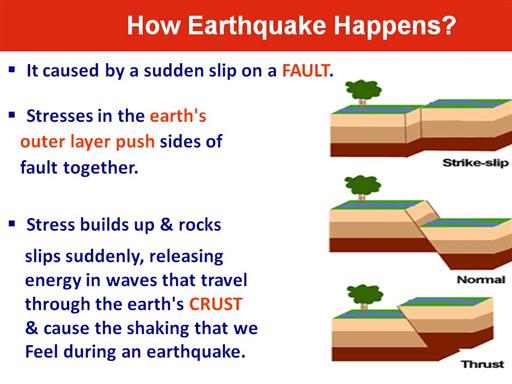| front |1 |2 |3 |4 |5 |6 |7 |8 |9 |10 |11 |12 |13 |14 |15 |16 |17 |18 |19 |20 |21 |22 |23 |24 |25 |26 |27 |28 |29 |30 |31 |review |
 |
Slide from Supercourse Library - http://www.pitt.edu/~super1/lecture/lec32361/007.htm
What is a fault that we talk about it in the earthquake? A fault is a fracture along which the blocks of outermost major layer of the earth, on either side have moved relative to one another parallel to the fracture. Faults are classified to Strike-slip and Dip-slip faults (normal, reverse and thrust).
What is the crust? The outermost major layer of the earth is called CRUST and ranging from about 10 to 65 km in thickness worldwide. The uppermost 15-35 km of crust is brittle enough to produce earthquakes.
To learn more about the types of faults, please look at: http://earthquake.usgs.gov/image_glossary/fault.html http://www.iris.edu/gifs/animations/faults.htm http://www.iris.washington.edu/gifs/slides/faults/slideshow/index.htm |